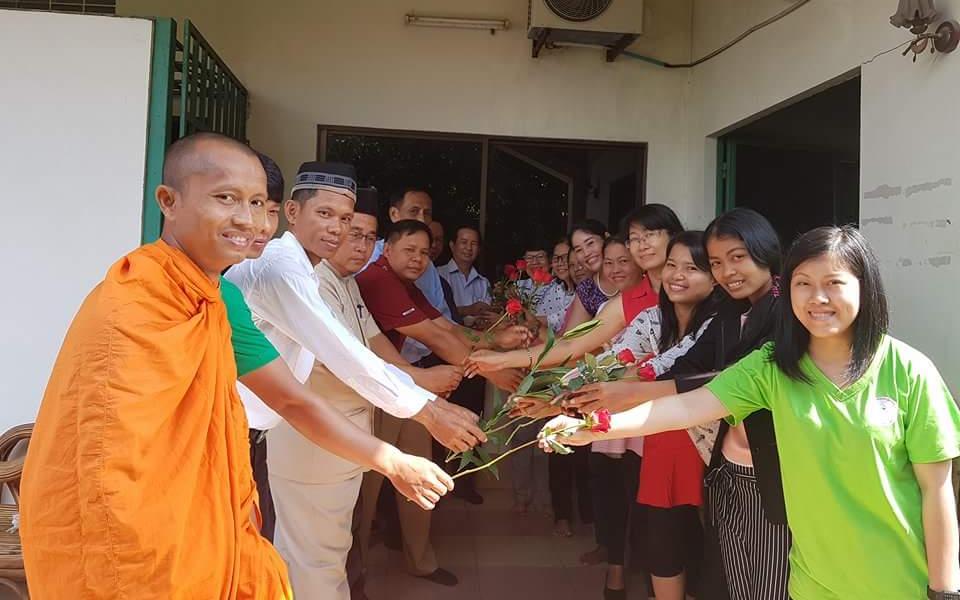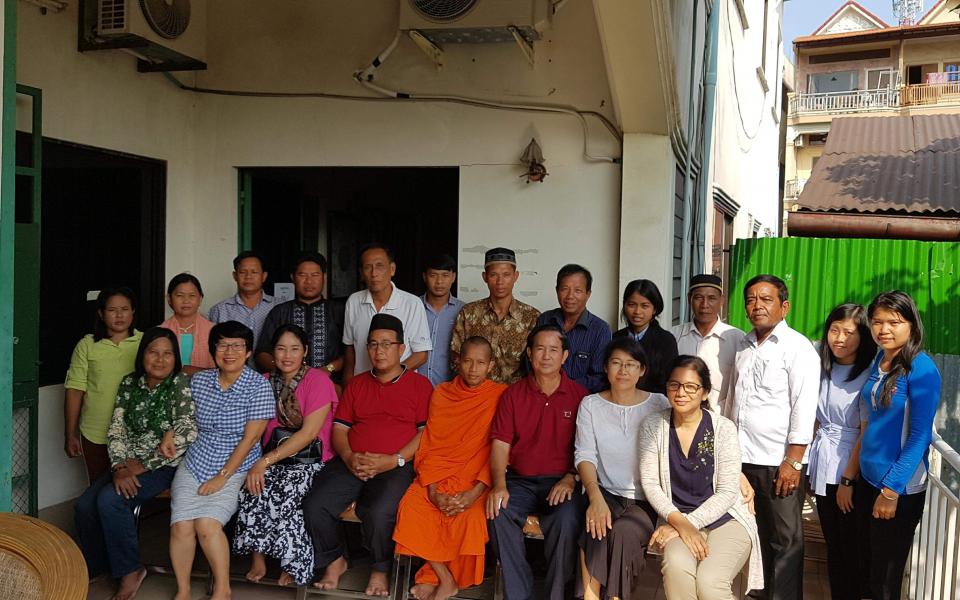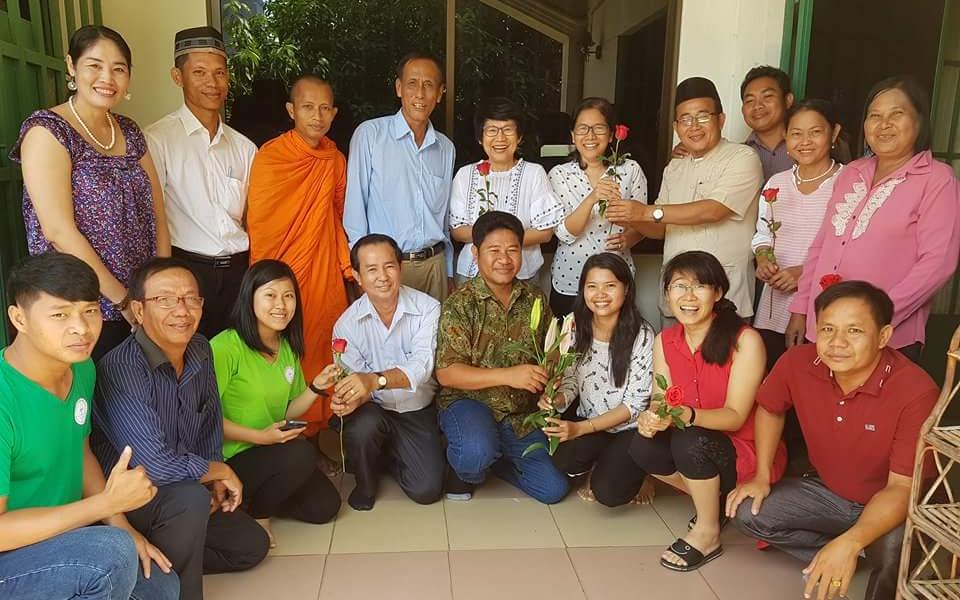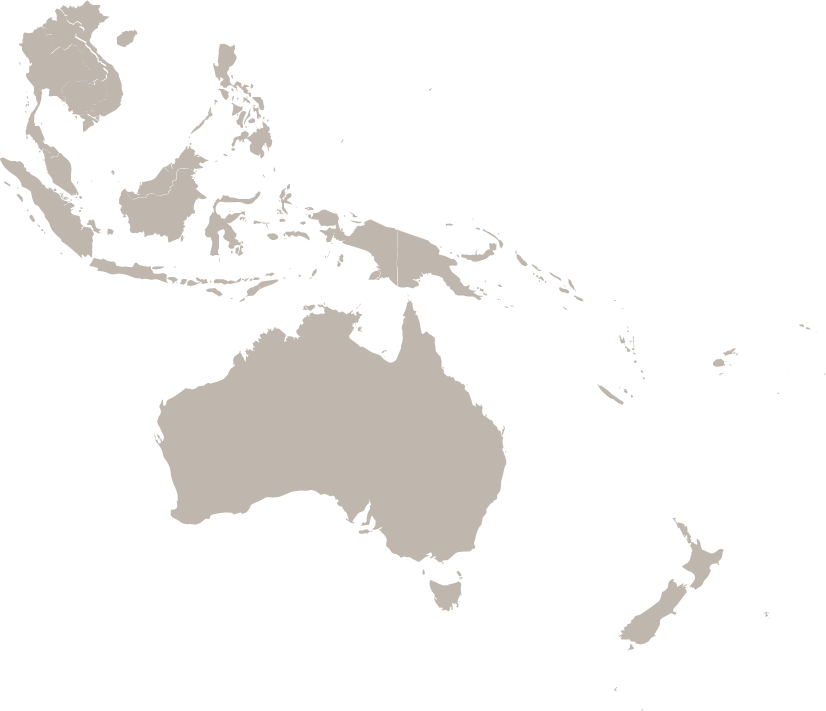The training was for to participants understand more about family reconciliation and how they can apply the Do No Harm (DNH) concept to their work and life.

Interfaith training was conducted this year on the theme of “Family Reconciliation and the Do No Harm Tool”. The family reconciliation was conducted on the 4th of March and the application training was held 5 to 7 March 2018 at the Alliance for Conflict Transformation (ACT) office in Phnom Penh, Cambodia.
A total of 20 participants (eight of whom were women) attended the training, including four ACT staff and 16 members of interfaith groups from four different provinces (Kratie, Kampong Cham, Kampong Chhnang and Kampot Province). The participants were diverse, from Buddhism, Muslim and Christian backgrounds, and also from the Cambodia Ministry of Cults and Religions. The training was for to participants understand more about family reconciliation and how they can apply the Do No Harm (DNH) concept to their work and life.

Welcoming the participants, Ms. Sotheavy, the Executive Director of ACT, introduced the way ACT integrates family reconciliation and DNH principles. The first day of the training was to introduce the ideas of family relationships and conflict analysis, including how to avoid and reconcile conflicts. The second day introduced the concept of DNH; its history, steps, context, and analyses on the “divider and connector.” The third day was a reflection and leading participants to learn the criteria of the divider and connector; with a move to step four, the Unpack Project, and step five, which taught about resources transfers and implicit ethical messages.
On the fourth day, participants learned about steps six and seven, which generated and tested options for the current project of interfaith cooperation. Teams wrote stories of change and results from their year-end and future-planning projects for interfaith network activities. On the last day of training, 8th March (also the International Day of Women), ACT also created space for an activity where ladies were given flowers from men of the interfaith community (they were impressed this event as they never before received any rose), and the group committed to respecting women.

Tests were given before and after the workshop, and the project found that participants improved. 90% of participants understood the family reconciliation and the DNH tools on connector analysis. Through the observation, the majority of the participants could descript the definition of DNH and could explain the seven steps of DNH. One female participant said that DNH’s approach serves the purpose of adopting measures of assistance in order to increase chances for peace and decrease the chances for tension and hate of each other. Most of them realized that the DNH tool can help them to reduce tension and increase harmony in their community when they implement their projects and activities.
According to reflection, most participants could explain what a divider is and a connector is, by saying that the Connectors and Dividers analysis of case study helped them to define the complex conflict as a result of project implantation. It is important and they had not previously thought about it. A monk, one of the training participants, expressed that the DNH tool can be used as a research methodology to understand conflict factors.

About 50% of participants expressed that working on an analysis of divider and connector criteria was very hard, but it is helpful to group all factors into each set of criteria. This shows as evidence that the majority of participants enabled practice quickly in identifying the criteria of each factor related to divider and connector. Through daily reflection and pre- and post-project testing, we demonstrated that participants gained understanding on unpacking the project. They enabled analysis of the assistance program by using common questions to ask and consider alongside possible sources of division and tension. The majority of the participants actively participated in a discussion of resource transfers, and they expressed that it reflected the reality that it impacted any project brought to the community and could push a conflict to violence.
The participants thanked the trainers and donors who provided them the chance for this training, as they were able to learn new things and improve their work and self-effectiveness, have fun and enjoy the project. Ms. Lun Ny said, “Thanks to the trainers and ACT, who allowed me to join the training. This training is different from other trainings, in which I learned a lot about divider and connector.”
Mr. Sary said, “This helped me to understand that the Do No Harm framework is an approach that is highly compatible with community-based participatory processes and may in fact help strengthen local capacities for peace, in the process of using it.”
Mrs. Sang Siem appreciated the DNH tool. She demonstrated great deal of commitment to apply divider and connector analysis when she works to address domestic violence. Participants liked this training, and said, “I have new tools and I learned new things. I commit to apply this tool in my daily work as my project to support the communities where a lot of conflict exists.” Participants also suggested that donors support ACT more so that they are able to have such important trainings and conduct more effective interfaith work more widely in their communities.
See more on the ACT website.
